No products in the cart.
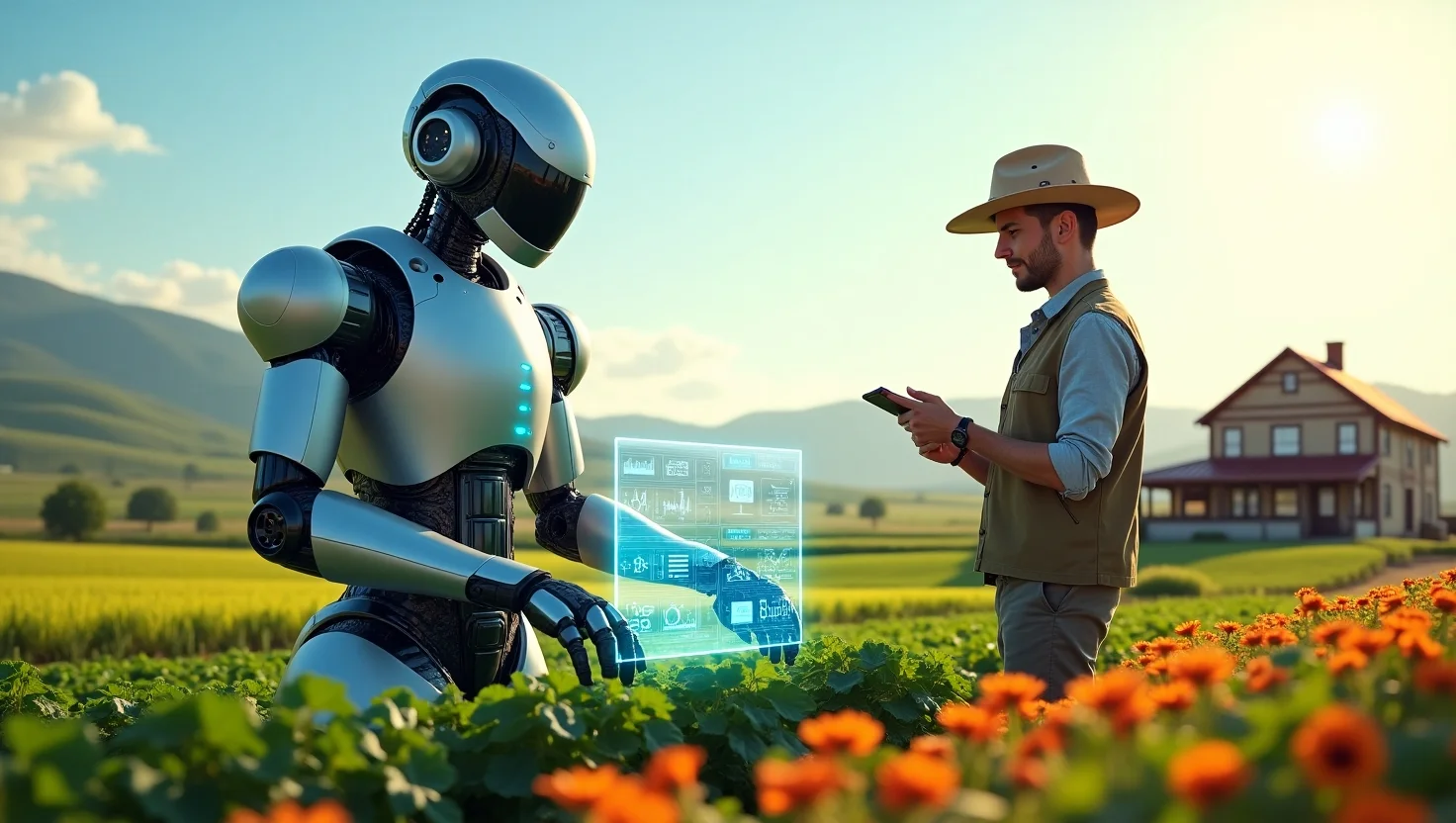
1. Introduction:
Imagine a world where farming is not just about hard work and intuition but about data-driven decisions and smart automation. This reality is rapidly taking shape on U.S. farms, thanks to the growing adoption of artificial intelligence (AI) tools. From precision agriculture to livestock management, AI is transforming how farmers increase productivity and sustainability. Yet, many farmers still wonder: How can I practically use AI on my farm?
Despite the promising advancements, a significant number of U.S. farmers remain uncertain about the practical application of AI. The problem often lies not just in understanding what AI can do but in knowing which tools to choose and how to integrate them into daily operations. As AI technology continues to evolve, staying informed and making strategic choices can make a difference between outdated methods and a future-proof farm.
This guide aims to bridge that knowledge gap by offering a beginner-friendly approach to using AI tools effectively. Whether it’s optimizing irrigation, monitoring livestock health, or predicting crop yields, integrating the right AI solutions can drastically improve efficiency and profitability.
In this article, we’ll walk you through essential AI tools every U.S. farm needs, how to choose the most suitable options, and practical steps to get started. You’ll also discover real-world examples and tips to overcome common challenges, making it easier to harness AI’s potential without feeling overwhelmed.
Ready to elevate your farming practices? Let’s explore how AI can work for you!
2. Understanding AI in U.S. Farming
What is AI in Agriculture?
Artificial intelligence (AI) in agriculture refers to the use of smart technologies to improve farming practices. These technologies, including machine learning, computer vision, and robotics, are designed to analyze vast amounts of data and make data-driven decisions. For instance, AI-powered drones can monitor crop health, while predictive analytics can forecast yield outcomes based on real-time weather data. The result? Enhanced productivity, reduced waste, and more sustainable farming practices.
In the United States, the adoption of AI tools in agriculture is gaining momentum. Farmers are increasingly leveraging these technologies to optimize tasks like soil analysis, irrigation management, and pest control. Whether it’s a small-scale organic farm or a large commercial operation, AI offers tailored solutions to meet diverse needs. By integrating AI, farmers not only boost efficiency but also gain better control over their operations, leading to more consistent and profitable outcomes.
Why U.S. Farmers Are Embracing AI
Several factors are driving the adoption of AI on U.S. farms. One major reason is the pressing need to increase agricultural output amid labor shortages and climate challenges. AI tools can compensate for human effort, enabling farms to maintain productivity even with fewer hands on deck.
Another factor is the availability of affordable and easy-to-use AI technologies. From autonomous tractors to crop monitoring apps, farmers have access to user-friendly solutions that fit their operational scale and budget. Additionally, government initiatives promoting precision agriculture are encouraging farmers to integrate digital tools into their workflows.
By embracing AI, farmers are not just keeping pace with modern agricultural practices—they are setting the stage for a more resilient and productive future. As more success stories emerge, the interest in AI adoption continues to grow, making it essential for farmers to stay informed and prepared.
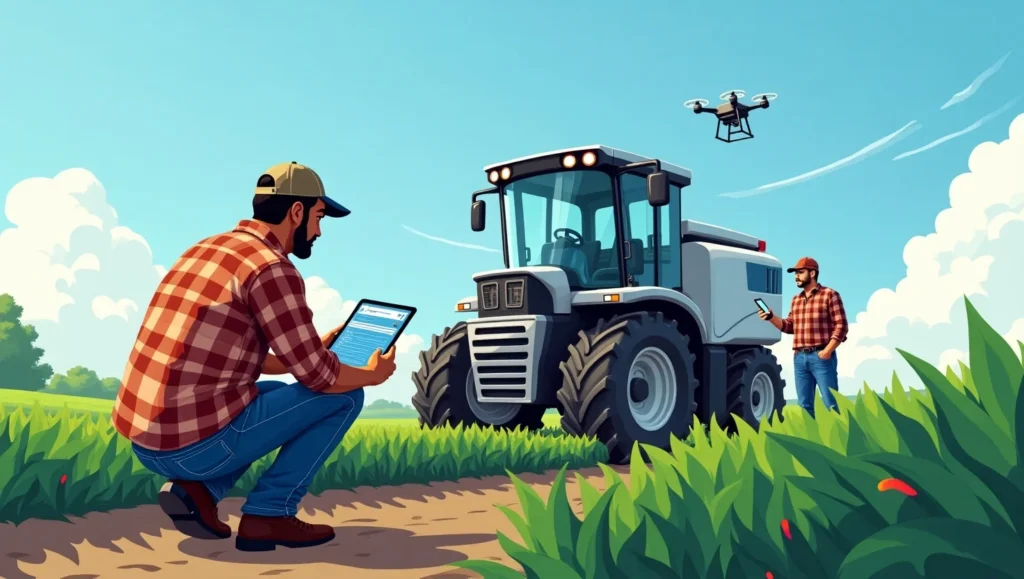
3. Essential AI Tools for Beginner Farmers
Top 5 AI Tools Every U.S. Farm Needs
Implementing AI in farming doesn’t have to be overwhelming, especially when you know which tools to start with. Here are five essential AI solutions that can make a significant difference on U.S. farms:
- AI-Powered Irrigation Systems:
- These systems use real-time data to monitor soil moisture and weather patterns, optimizing water use. By automatically adjusting irrigation schedules, farmers can prevent overwatering and reduce water waste.
- Example: A California vineyard reported a 30% reduction in water usage after installing AI-based irrigation controls.
- Crop Monitoring Drones:
- Equipped with AI and computer vision, drones can scan large fields, identifying crop health issues like pests, diseases, or nutrient deficiencies.
- Benefit: Faster data collection compared to manual inspections, enabling quicker interventions.
- Livestock Health Monitoring:
- AI-powered collars and sensors track animal health metrics, such as body temperature and movement patterns. Early detection of health issues leads to prompt treatment, minimizing losses.
- Example: A Midwest dairy farm saw a 20% drop in veterinary costs after implementing health monitoring AI.
- Automated Harvesting Robots:
- These robots can differentiate between ripe and unripe produce, ensuring efficient and accurate harvesting. They reduce the need for manual labor, particularly during peak seasons.
- Key Feature: Customizable settings for different crop types, making them versatile across farms.
- Yield Prediction Software:
- Uses historical data and machine learning to forecast crop yields. Farmers can plan better and make more informed marketing decisions.
- Example: An Iowa corn farm increased profitability by accurately predicting output and negotiating better contracts.
How to Choose the Right AI Tool for Your Farm
Selecting the best AI tool requires understanding your farm’s specific needs. Start by assessing the challenges you face, whether it’s water management, crop monitoring, or labor shortages. Once identified, compare tools based on ease of integration, maintenance requirements, and cost-effectiveness.
Farm size also plays a crucial role. Smaller operations may benefit from affordable, multifunctional tools, while larger farms might require more specialized systems. Seek tools with user support and training resources, as proper setup and maintenance are crucial for long-term success.
Integrating these AI tools strategically can significantly enhance your farm’s efficiency and yield. As more farmers adopt AI, staying ahead means choosing the right technology and making data-driven decisions.
4. Practical Steps to Implement AI on Your Farm
Setting Up AI Infrastructure
Implementing AI technology on your farm starts with establishing a solid infrastructure. The first step is assessing your existing equipment and technology. Many AI tools require compatibility with digital platforms, so it’s crucial to evaluate whether your current systems can support new integrations. For instance, AI-powered irrigation systems often need sensors, automated valves, and a reliable internet connection.
Start small by introducing one or two AI tools that address your most pressing challenges. For example, if water conservation is a priority, begin with AI-driven irrigation solutions. Make sure your staff is trained to operate and maintain these tools efficiently. Investing in user-friendly interfaces and ongoing technical support can reduce downtime and increase adoption.
Key Considerations:
- Connectivity: Reliable Wi-Fi or IoT network for data transmission.
- Data Compatibility: Systems that integrate well with existing farm management software.
- Maintenance: Regular updates and hardware checks to ensure smooth operation.
- Budget: Start with scalable tools that allow upgrades as your needs evolve.
Training and Maintenance
The successful implementation of AI tools hinges on adequate training for farm workers. While AI technology is becoming more user-friendly, workers must understand how to operate and troubleshoot new systems. Consider conducting workshops or online training sessions provided by AI tool manufacturers.
Maintenance is equally important. Regularly check sensors, update software, and calibrate devices to maintain accuracy. Some AI systems offer predictive maintenance alerts, helping you address potential issues before they escalate. Additionally, document your maintenance routine to ensure consistency, especially when multiple users handle the equipment.
Expert Tip: Schedule periodic reviews to assess the performance of each AI tool. Use data analytics to gauge improvements in productivity and identify areas that need optimization.
By setting up the right infrastructure and prioritizing training, you pave the way for a seamless AI integration. The goal is to minimize disruptions while maximizing the benefits of smart farming technologies.

5. Overcoming Common Challenges in AI Adoption
Addressing the Cost Barrier
One of the primary challenges that farmers face when adopting AI technology is the initial cost. AI tools, particularly advanced systems like autonomous tractors or crop-monitoring drones, can have a high upfront investment. However, it’s important to view this as a long-term investment rather than an immediate expense.
Many farmers may be concerned about the return on investment (ROI). To alleviate this, calculate the potential savings and increased productivity that AI tools can offer. For example, AI-powered irrigation systems can lead to significant water savings, while yield prediction software can help farmers make better pricing and distribution decisions, ultimately increasing profitability. Some AI tools may also qualify for government incentives or subsidies, making the upfront cost more manageable.
Strategy:
- Start with smaller, more affordable AI tools and scale up as you see the benefits.
- Look for financing options or partnerships with ag-tech companies offering pay-as-you-go models.
- Explore grants or subsidies that support the adoption of smart farming technologies.
Dealing with Resistance to Change
Another obstacle is resistance to change, particularly in traditional farming communities where methods have been passed down for generations. Many farmers may be hesitant to adopt AI because it feels unfamiliar or intimidating.
The key to overcoming this resistance is education and communication. Start by sharing success stories from similar-sized farms that have successfully implemented AI solutions. Additionally, involve the entire farming team in the decision-making process. When everyone feels included, the transition to new technologies is more likely to be accepted.
Tips to Encourage Adoption:
- Highlight the practical benefits: More efficient farming, lower labor costs, and increased yields.
- Provide easy-to-understand demonstrations and pilot programs to showcase AI tools in action.
- Offer incentives for early adopters, such as free training sessions or trial periods for new AI products.
By addressing these challenges head-on, farmers can smoothly transition to AI-powered agriculture, increasing the overall success of the operation and boosting long-term sustainability.
6. Real-World Examples of AI in Action on U.S. Farms
Case Study 1: Precision Irrigation in California Vineyards
A California vineyard recently adopted an AI-powered irrigation system that utilizes soil moisture sensors and weather data to optimize water usage. By integrating AI, the vineyard was able to cut its water consumption by 30%, which is critical in an area facing water scarcity. The system not only reduces waste but also ensures that crops receive the right amount of water at the right time, leading to healthier vines and better-quality grapes.
This shift toward AI-driven irrigation resulted in higher yield consistency and improved resource management, which allowed the vineyard to stay competitive in a challenging market. By focusing on sustainability, the vineyard not only preserved valuable resources but also enhanced its long-term profitability.
Takeaway: AI can help farms reduce costs, improve resource management, and increase sustainability, making it an invaluable tool for operations in water-stressed regions.
Case Study 2: AI in Livestock Management on a Midwestern Dairy Farm
A Midwestern dairy farm turned to AI technology to monitor its herd’s health using wearable sensors and real-time data analytics. These AI-powered collars track key health indicators such as heart rate, body temperature, and activity levels. Early detection of health issues, such as lameness or infections, led to faster intervention and reduced veterinary costs by 20%.
In addition, the AI system provided data-driven insights on the best breeding practices, leading to improved herd productivity and milk quality. The farm also used AI to predict optimal feeding schedules and monitor nutritional intake, ensuring the cows received the right nutrients at the right time for maximum milk production.
Takeaway: AI tools in livestock management not only improve animal health but also boost farm profitability by reducing operational costs and enhancing overall productivity.
The Impact of AI on Crop Yields: A Texas Corn Farm Example
A Texas-based corn farm implemented AI-powered yield prediction software that used data from previous harvests, weather patterns, and soil conditions to forecast the expected crop yield. This information allowed the farm to make more accurate decisions about planting, irrigation, and harvesting, resulting in a 15% increase in yield output.
By leveraging predictive analytics, the farm was able to avoid overproduction or underproduction, optimizing resource use and ensuring higher profit margins. This example highlights how AI can be a game-changer in maximizing crop yields while minimizing risks associated with weather and soil variability.
Takeaway: AI can provide actionable insights for optimizing crop management and improving yield consistency, making it an essential tool for modern farming.
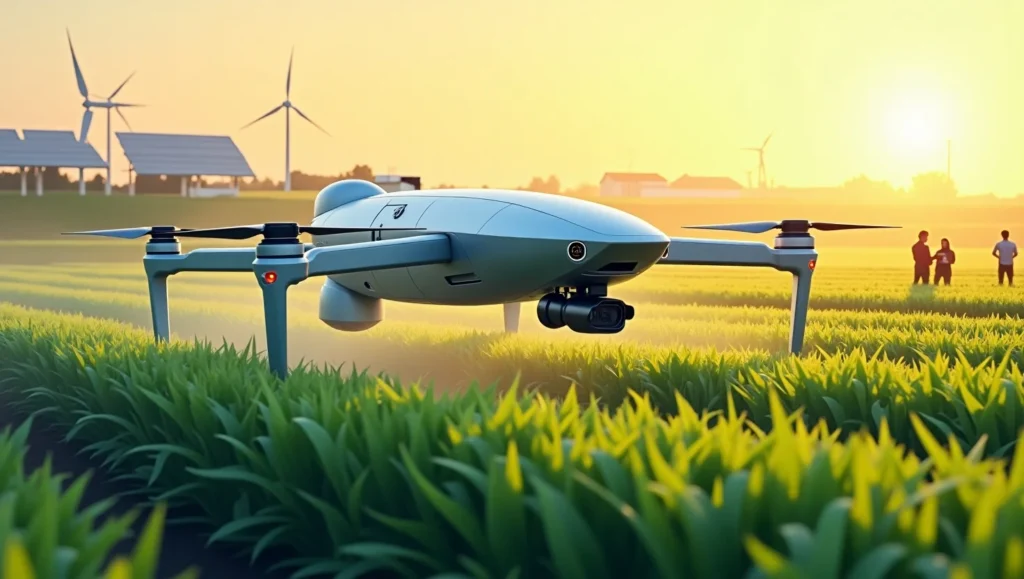
7. Conclusion & Call to Action
Embrace the Future of Farming with AI
AI technology is transforming the way U.S. farms operate, providing farmers with powerful tools to enhance productivity, sustainability, and profitability. From precision irrigation to livestock health monitoring, AI tools offer solutions that can address the pressing challenges faced by farmers today. By starting small, investing in the right technologies, and overcoming common adoption barriers, farmers can integrate AI into their operations and begin reaping the benefits.
As the examples from California, the Midwest, and Texas demonstrate, AI has the potential to revolutionize farming practices, leading to higher yields, reduced costs, and more sustainable practices. Whether you’re looking to improve water management, increase crop yields, or monitor livestock health, there’s an AI tool out there that can meet your farm’s specific needs.
Take the First Step Towards Smart Farming
The future of farming is digital, and the sooner you embrace AI, the better positioned you’ll be to thrive in a competitive agricultural market. Start by exploring the available tools, consulting with experts, and determining which AI solutions best align with your farm’s goals. Remember, AI adoption is a journey, and every step forward brings you closer to a smarter, more efficient farm.
Call to Action:
Ready to boost your farm’s productivity with AI? Start by researching AI tools tailored to your farm’s needs and explore available resources to help you make the transition. Stay ahead of the curve and ensure your farm’s long-term success by embracing AI technology today.
FAQs:
Q1. What are AI tools in agriculture, and how do they work?
AI tools in agriculture are technologies that use artificial intelligence to improve farming processes. These tools can analyze large amounts of data from various sources (such as weather patterns, soil conditions, and crop health) to optimize farming practices. AI tools work by using machine learning algorithms, sensors, and data analytics to make real-time decisions that improve efficiency, reduce costs, and boost productivity on the farm.
Q2. What are the benefits of using AI on farms in the U.S.?
The benefits of AI in farming include increased efficiency, reduced operational costs, improved crop yields, and enhanced sustainability. AI can optimize irrigation systems, monitor livestock health, predict crop yields, and automate labor-intensive tasks, leading to significant savings in time and resources. It also helps farmers make data-driven decisions that improve productivity and profitability.
Q3. Are AI tools expensive for small-scale farmers?
While some AI tools can be costly, many options are available that cater to small-scale farmers with budget-friendly solutions. Starting with simpler AI systems, such as crop monitoring apps or basic irrigation management tools, can provide value without a huge financial investment. Additionally, there are grants and subsidies available in some regions to support the adoption of AI technology in agriculture.
Q4. How do I choose the right AI tools for my farm?
Choosing the right AI tools depends on your farm’s specific needs. Start by identifying the challenges you face, such as water management, crop monitoring, or labor shortages. Then, research AI tools that specialize in those areas. Consider factors like ease of integration, cost-effectiveness, user support, and scalability to ensure the tool fits your long-term goals.
Q5. Can AI tools be used on all types of farms?
Yes, AI tools can be used on a variety of farms, whether they are large-scale commercial operations or smaller family farms. The technology is flexible and can be tailored to different crops, livestock, and farming practices. Whether it’s optimizing irrigation for a vineyard or using drones for crop health monitoring, there are AI solutions that can be adapted to almost any farming situation.
Related Articles
Farm Automation
How AI Is Helping Organic Farmers Stay Competitive
1. Introduction: Organic farming has always been admired for its sustainability, purity,...
Farm Automation
AI Farm Assistants: Are Virtual Advisors the Future of Agriculture
1. Introduction: Imagine having a personal farm assistant who never sleeps, analyzes...
Farm Automation
How U.S. Farmers Use AI to Monitor Weather and Make Better Decisions
1. Introduction: For generations, U.S. farmers have relied on intuition and traditional...
Farm Automation
Can AI Replace Manual Labor on U.S. Farms? Here’s What to Know
1. Introduction: Imagine a cornfield in Iowa where machines handle everything from...
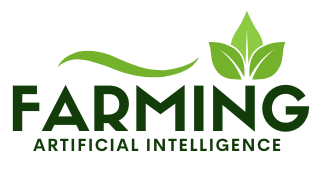
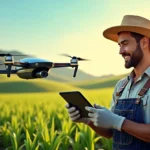
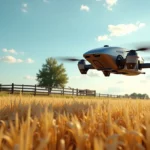






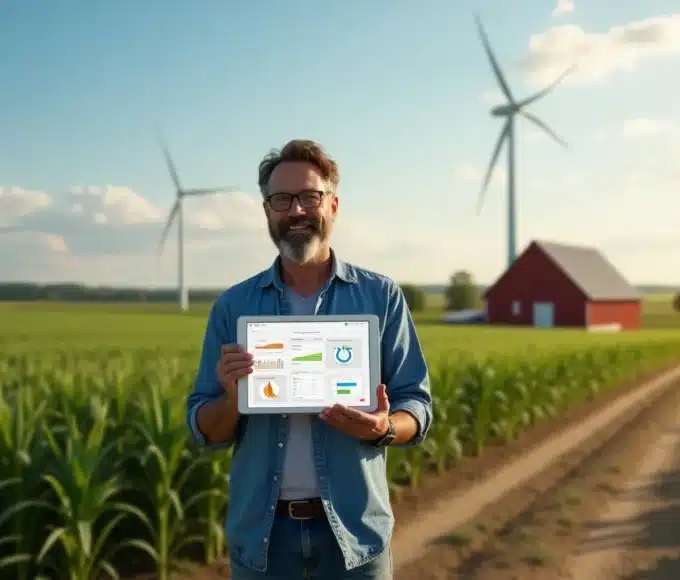
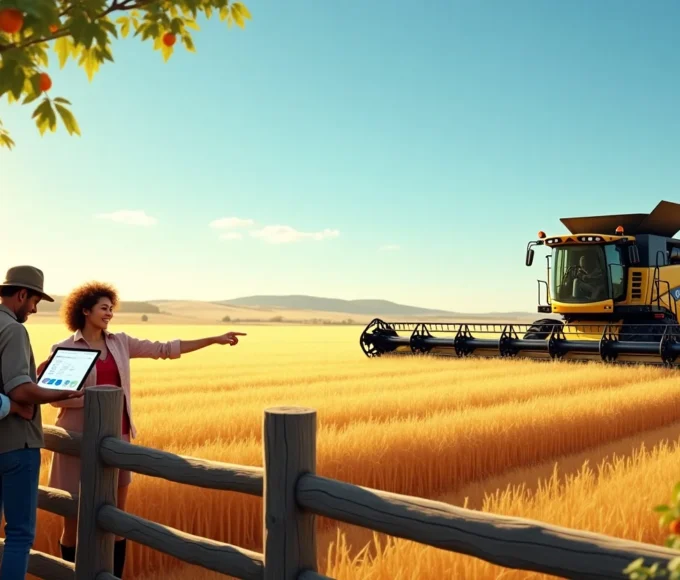
1 Comment